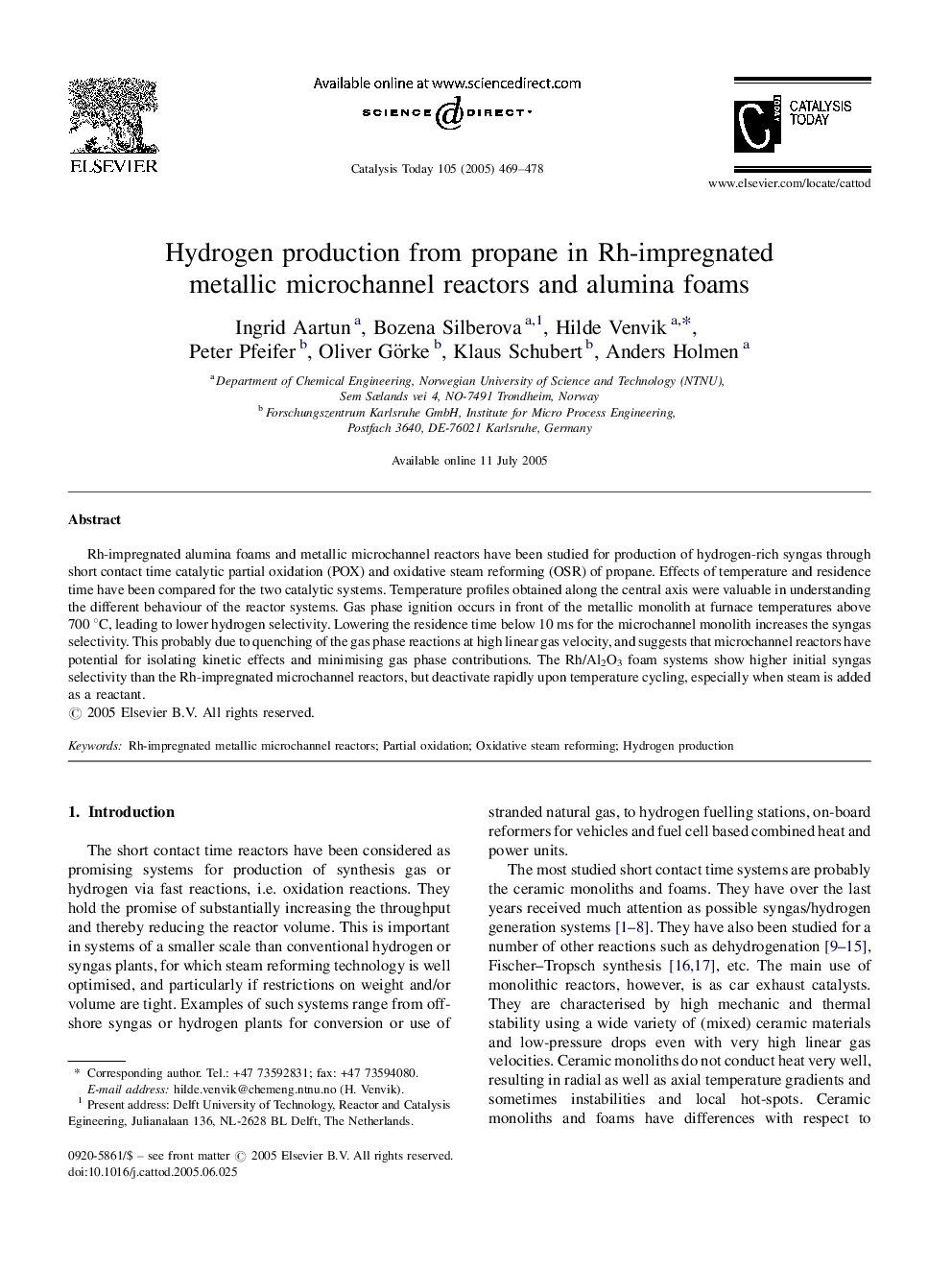| Article ID | Journal | Published Year | Pages | File Type |
|---|---|---|---|---|
| 9610343 | Catalysis Today | 2005 | 10 Pages |
Abstract
Rh-impregnated alumina foams and metallic microchannel reactors have been studied for production of hydrogen-rich syngas through short contact time catalytic partial oxidation (POX) and oxidative steam reforming (OSR) of propane. Effects of temperature and residence time have been compared for the two catalytic systems. Temperature profiles obtained along the central axis were valuable in understanding the different behaviour of the reactor systems. Gas phase ignition occurs in front of the metallic monolith at furnace temperatures above 700 °C, leading to lower hydrogen selectivity. Lowering the residence time below 10 ms for the microchannel monolith increases the syngas selectivity. This probably due to quenching of the gas phase reactions at high linear gas velocity, and suggests that microchannel reactors have potential for isolating kinetic effects and minimising gas phase contributions. The Rh/Al2O3 foam systems show higher initial syngas selectivity than the Rh-impregnated microchannel reactors, but deactivate rapidly upon temperature cycling, especially when steam is added as a reactant.
Related Topics
Physical Sciences and Engineering
Chemical Engineering
Catalysis
Authors
Ingrid Aartun, Bozena Silberova, Hilde Venvik, Peter Pfeifer, Oliver Görke, Klaus Schubert, Anders Holmen,
